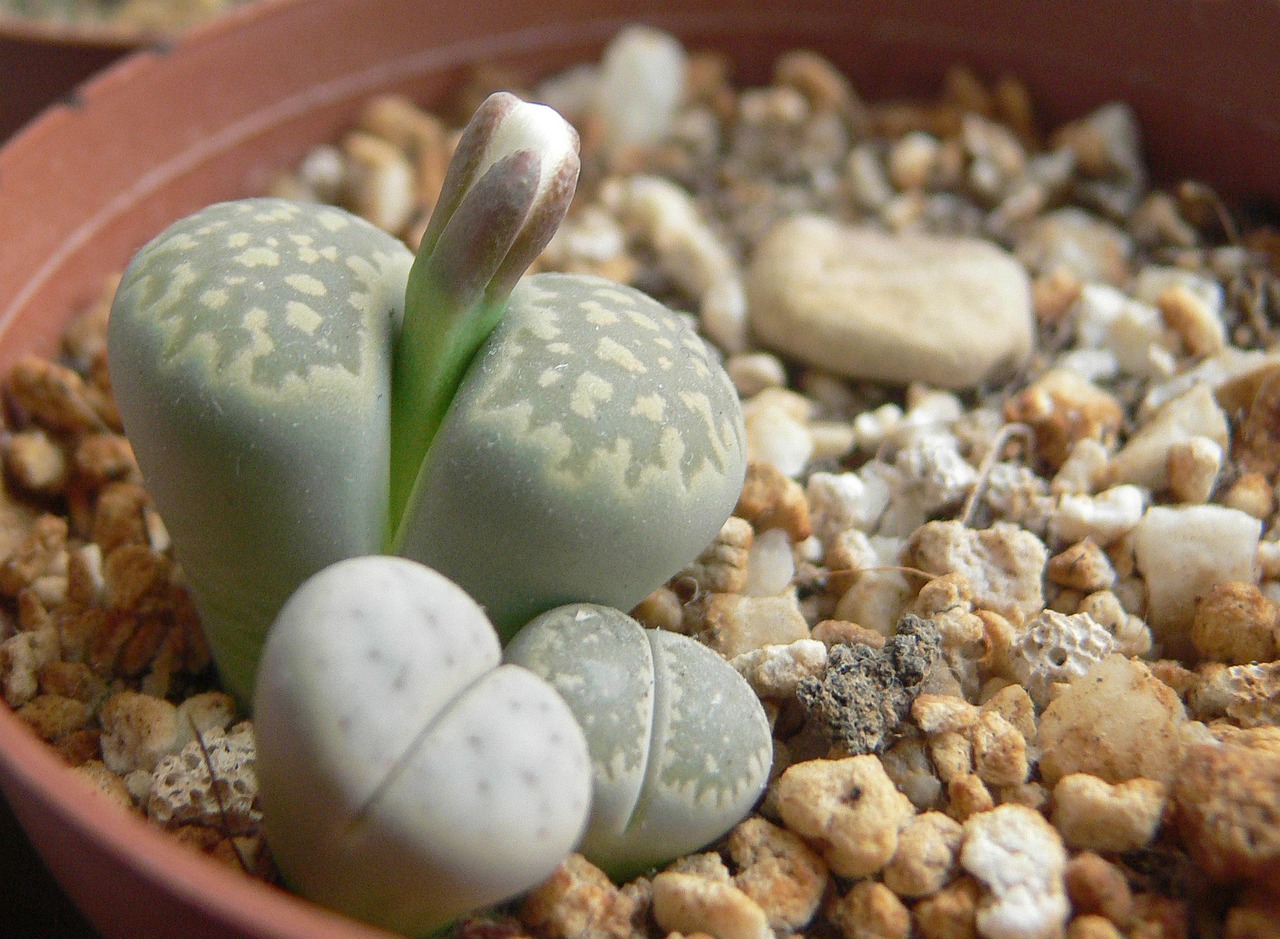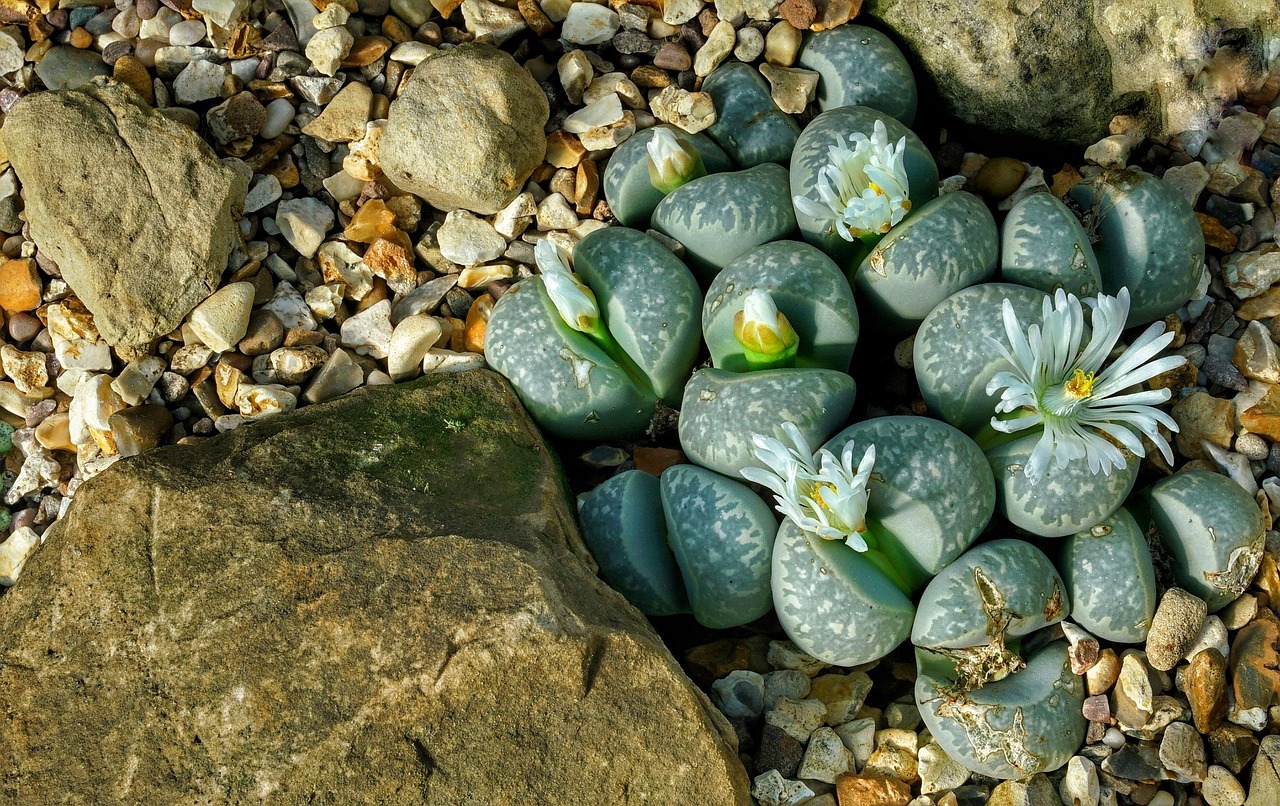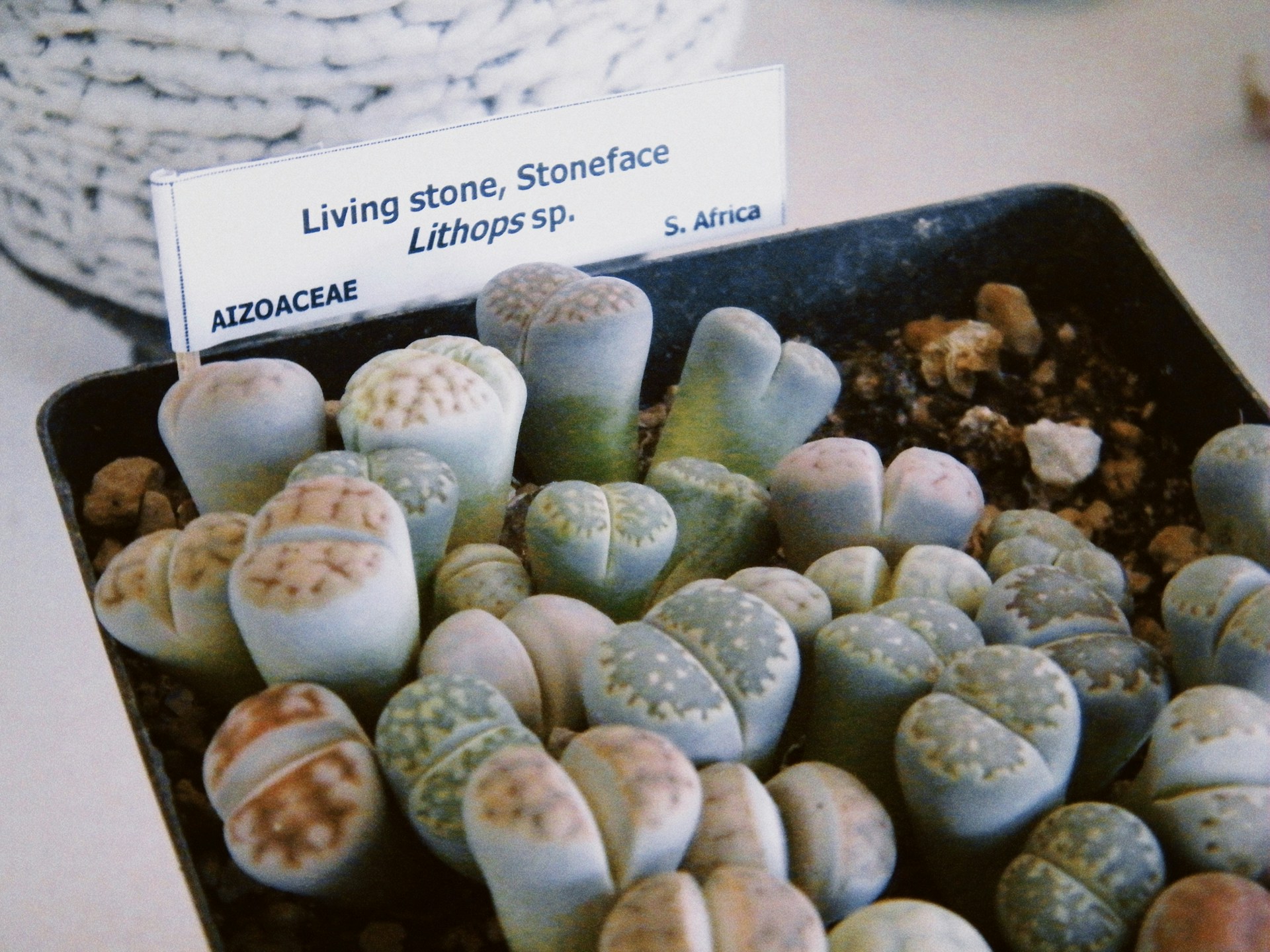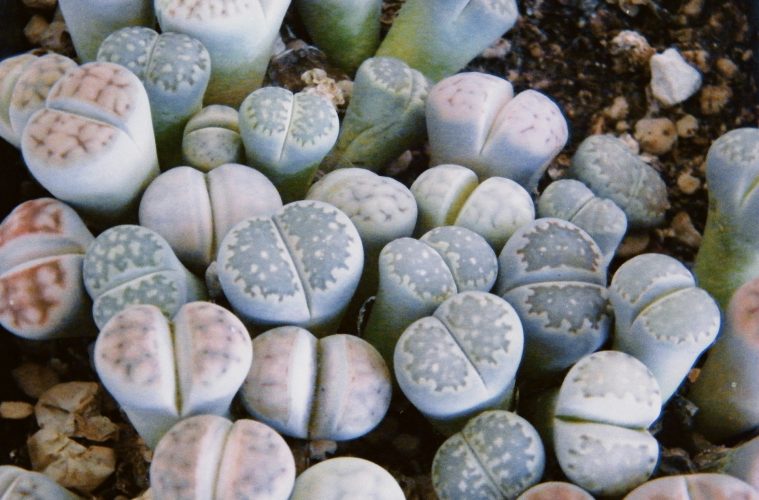Stone plants (lithops) are not only succulents that look like stones but also tend to grow between rocks and stones. Lithops is derived from the Greek lithos, meaning stone-like or stone appearance, hence the common name, living stones. These interesting-looking extreme survival plants come in many shapes, patterns, and sizes.

Image credit: Pixabay
Where stone plants grow naturally
South African Lithops species consist of a diverse plant with about 140 species, occurring in various types of habitats, including quartzite pebble pavements, dry slopes, calcrete soils, and grassveld patches.
Lithops species are also very tolerant of extremely high temperatures and cold temperatures during winter, and will survive up to 50 years when cultivated. Stone plants can similarly withstand very extreme conditions, and can tolerate very hot temperatures (over 42°C) and relatively low winter temperatures of -5°C. They also exist in Namibia, and one of them is found on the summit of the Brandberg in central western Namibia.

Image credit: Pixabay
Growing lithops as indoor plants
Lithop plants are so small, reaching just 8 centimeters in height and width, ideal as houseplants due to their size. They like to grow in conditions that reflect their own natural habitat, with six hours’ direct sunlight a day, sandy soil with good drainage, and moderate room temperature and humidity.
Cultivating stone plants requires sowing them in spring or autumn first and placing them in dormancy during hot summers or cold winters. Place the plant in sunlight, avoid burning the top leaves, and purchase artificial grow light if there’s a need for it. Water the soil lightly during spring and autumn, but not during summer and winter.

Image credit: Unsplash
Stone plants or living stones are remarkable succulents that blend beauty with resilience. Their unique stone-like appearance and ability to thrive in harsh environments make them both fascinating and low-maintenance additions to any indoor plant collection.
With the right care and conditions that mimic their natural habitat, these small yet hardy plants can live for decades, bringing a touch of the South African landscape into your home.
ALSO SEE: HOW TO SUCCESSFULLY GROW AND CARE FOR JADE HOUSEPLANTS
Featured image: Unsplash

